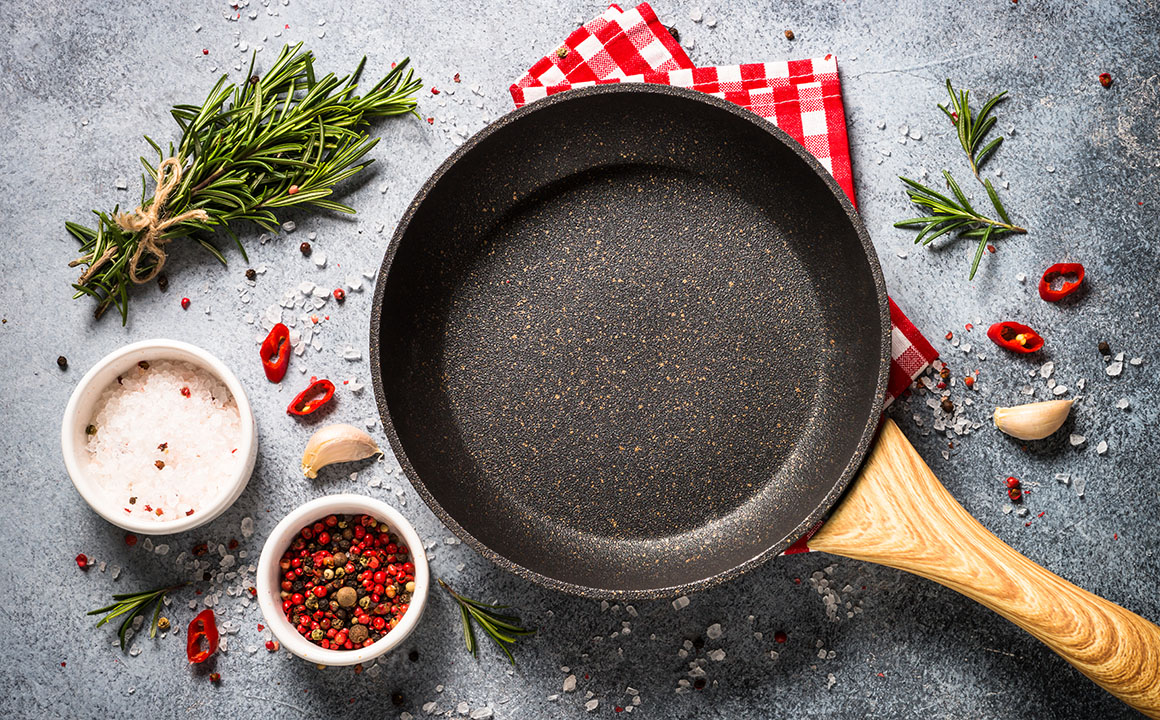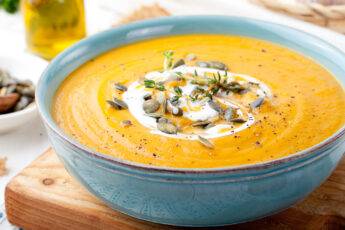Effective Tips To Caring For Your Cast Iron Cookware

Are you a culinary enthusiast who’s just learning to use cast iron cookware? Here’s a guide that will help keep your cookware in pristine shape.
Cast iron cookware is featured in a lot of recipes – whether it be on the stage of Masterchef or on one of the videos of your favorite food bloggers.
Whether you’re a culinary enthusiast or just someone who loves to cook good, professional-looking food, cast iron cookware is a must in your kitchen.
However, it’s not the easiest to use and store. There are proper ways to use cast iron skillets and care for them once it’s time to stow them away.
This guide will help you learn how to properly care for them. Keep reading to find out more.
Care For Your Cookware In 4 Easy Steps
A cast-iron skillet is an awesome tool. In fact, the property of the cast iron itself helps cook your food a lot better.
Your cast iron cookware will heat slowly, and once heated, will retain the heat; this property allows you to bring a delicious brown color to your ingredients and also helps you get that perfect sear on your steak. It can be used for a number of other purposes in the kitchen and will probably last you for a very long time.
Since the metal alloy (cast iron is a mixture of steel and iron) is doing most of the work, it’s important to maintain it.
Washing it thoroughly isn’t enough to do the trick. You also need to use oil for seasoning cast iron after use. Caring for your cast iron skillet can be boiled down into 4 simple steps. Without further ado, let’s look at how you can keep your precious cookware in a pristine state.
1. Clean Your Pan
Cleaning your pots and pans after cooking something is fairly straightforward when we consider regular cookware. With cast iron cookware, however, you have to be fast but gentle when getting off residual food or oil.
The key to understanding how you should clean your cast iron skillet is knowing that you don’t want to disturb its seasoning. You can’t put it directly under the tap, nor can you scrub it clean. So, what do you do?
First, start off by taking your skillet off the heat and pouring out any fats or oils from the pan. Remember, you have to work while it’s still hot to make sure nothing coagulates and sticks to the pan.
You can drain the fats and oils into a small container. Your pan will gradually cool a little. This is when you can start to deal with the stubborn bits of food stuck to the pan.
Next, you can pour hot water into the pan and wait for the debris to float to the top of the water. If not, then you can use a little bit of kosher salt and a paper towel to gently scrub the pan until the salt changes color.
This means that the debris is getting off and mixing in with the salt. If you are still unable to remove some of the debris, warm the pan up a little. The temperature will help loosen them up.
2. Rinse With Soap And Water
You can now gently rinse your skillet with warm water and soap. Your hands are enough to get rid of all the salt and dirt on the surface. A paper towel helps in this step. You don’t necessarily need to do it under the kitchen sink. You can also use a large bowl with soapy water.
Can You Wash Cast Iron With Soap And Water?
You may have heard that soap and water don’t go well with cast iron. However, you don’t have to worry about this too much. Dishwashing detergents these days are very gentle, so they will not harm your skillet or its seasoning. Furthermore, the seasoning on your pan can’t be stripped off easily.
Let’s explain this with science. Any fat that you put into the pan will break into small polymer chains, that is, the fat will split into smaller particles. These short-chained polymers will then bond with the carbon and iron present on your pan, giving your cast iron skillet that characteristic black glaze.
This black layer, which acts as a layer of protection between the air and the surface of the skillet is called seasoning. Using your skillet more will result in more layers of seasoning.
So as you can see, soap cannot damage any cast iron skillet that is properly seasoned with oil. To add, washing your cookware with soap will help keep it sanitized. Besides, if you suspect that you may have accidentally damaged your seasoning, don’t worry as we will discuss how to re-season the pan in the later steps.
3. Wipe It Completely Dry
The rest of your cookware can be rinsed without water and left on a rack to dry. Don’t make this mistake with your cast iron cookware. While it is true that the seasoning does act as a sort of protective barrier, it isn’t enough to prevent your skillet from rusting.
Iron reacts very easily with water, which is why it’s important to wipe your pan completely dry after you wash it. Do this with a soft cloth or a few paper towels. To make sure all the water is removed, you can put your cookware back on the stove at high heat. Any residual liquid will quickly evaporate, leaving you with a clean and dry skillet.
4. Season/Prime
The very last step in the maintenance routine is to make sure you season your cast iron skillet and prepare it for its next use. This step is also called the priming step. I’m sure you have heard of priming something before starting work with it or on it. For example, we prime walls before painting, so that the paint goes on smoother and lasts longer.
Remember that your cast iron cookware gets better with use. Seasoning or priming just makes it work its magic even more. For this step, you will need paper towels and oil. You can use oil meant especially for seasoning, or you can use canola and grapeseed oil. Grapeseed oil is one of the best options for seasoning, so consider stocking up on some.
Apply a small amount of oil on a paper towel and begin rubbing it all over the skillet. Make sure you do this on all surfaces – the top, bottom, sides, and even the handle. To simplify, just make sure you evenly coat the entire cookware. Then take a fresh paper towel and blot off all the excess oil.
The final step is to heat the pan on the stove (on high heat) or in an oven until it starts to smoke a little. This will help melt the oil onto the skillet and stop it from becoming sticky or stale. Once that’s done, you can finally store it without worry until it’s time to bring it back out again.
What To Do When Your Cookware Gets Rusty
Let’s face it, we are working with iron here. At some point, it’s bound to get rusty in some areas. Don’t blame yourself too much for this as it’s a common issue when it comes to owning cast iron cookware. This does not mean that you have to go out and buy a new one. There are easy fixes to this problem too.
To get rid of the rust, you can either use a generous helping of kosher salt or a chainmail scrubber. Chainmail scrubbers are like your regular metal scrubbers, but they’re made of metal rings with rounded edges. You don’t need water or liquid to get to scrubbing.
A chainmail scrubber will get the job done faster but use kosher salt if you want to be more careful. Once you notice the salt changing color, pour it out and replace it with more fresh salt. Keep scrubbing in circular motions with a paper towel until you begin to see the raw metal peeking through.
Then all you have to do is rinse it the way we learned before and follow up with the seasoning step. It will go back to its original state over time.
Conclusion
Knowing how to use and maintain a cast iron skillet is a skill that will help you be a better cook. It’s actually a sign that you’ve come a long way in terms of cooking.
If you know how to properly clean, maintain, and store your skillet, not only will it last longer, but it will gradually improve your cooking experience.
We hope this guide will be useful to all those who are new to using cast iron cookware.





Leave a Comment